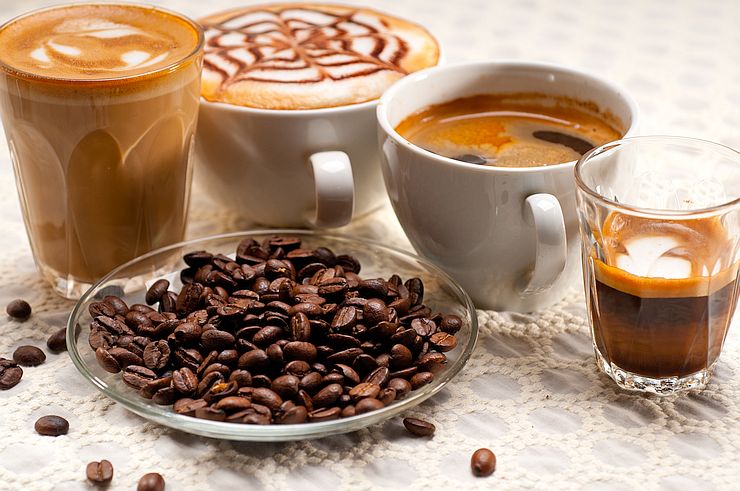Choosing the coffee beans for espresso is a matter of personal taste. But the truth is that we can't make espresso with any beans as we please. So if we say we can use any coffee beans to make espresso, it is true, but only partially. But we will show you how to choose a coffee for espresso, so you can be confident when you make your next purchase.
Espresso as a coffee brewing method is not very well understood. Beginner home baristas don't feel confident when choosing coffee beans for espresso. The roast, or the origin, single origin, or a blend, are all factors to weigh in when making a choice. The choice is a personal preference, ultimately, but there are some technical details that you need to consider before buying.
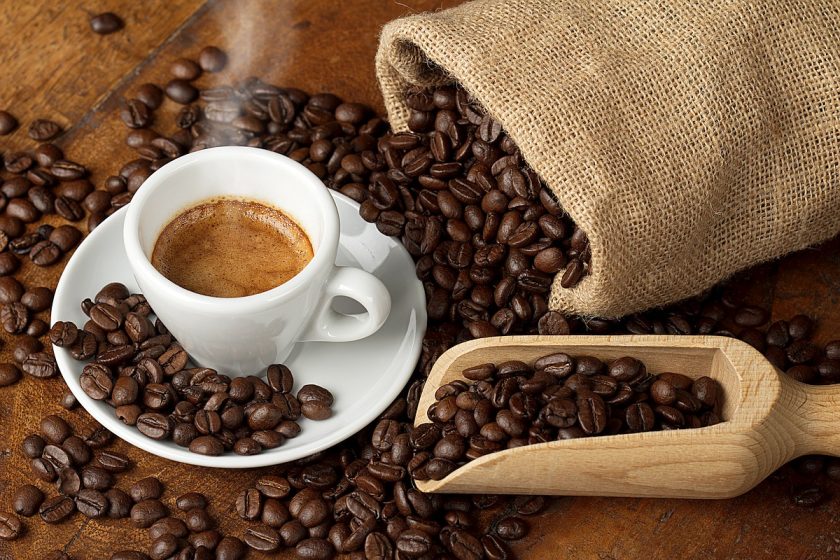
Learn how to choose coffee for espresso, why blends are better, and learn difference between dark and medium beans for espresso.
This article isn't a coffee review. We only show you here how to choose your beans, and what coffee to use for espresso. We have some great suggestion in a different article, if you're looking for some great espresso beans. that article is here: Best Coffee Beans for Espresso.
What Coffee is Best for Espresso?
Many home baristas are wondering what coffee to use for espresso. I have good news and bad news. The good news is that espresso uses regular coffee beans. The bad news is that you can use any coffee beans for espresso.
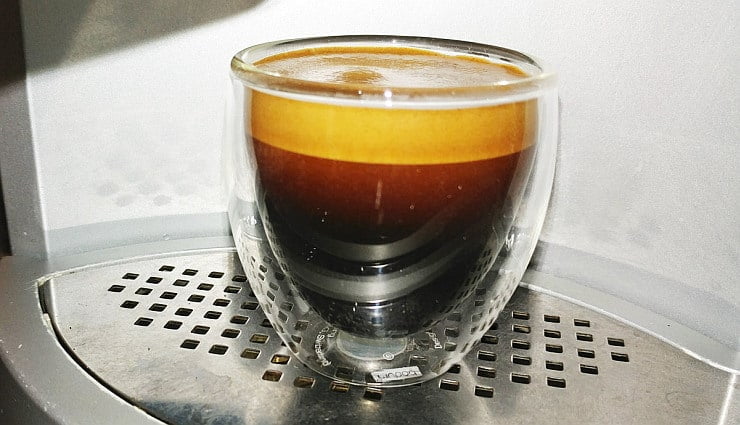
Can Any Coffee Beans Be Used For Espresso?
If I got you confused here, let me explain. It's great news that you can use regular beans for espresso. But having so many options make it hard to choose, and easier to skimp on the beans' quality, and espresso needs quality coffee.
The point is that you can make espresso from any kind of coffee. It doesn't matter the origin, the roast, or the variety. Espresso beans and espresso blends is just a way for roasters to tell customers that they optimized the blend for espresso. In reality, some beans can be better for an espresso shot, but, there are a lot of variables that go into crafting the perfect espresso shot.
The reality is that a blend, or a roast are not optimal for brewing the best espresso. Rather they are optimized to produce decent shots, regardless of the barista skills. But more about that in the next sections.
What Roast Is Best for Espresso?
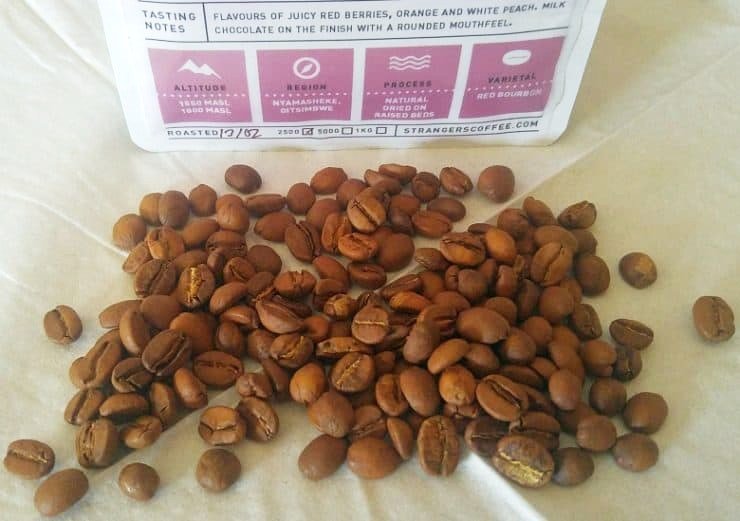
Medium-dark roast is probably one of the safest roast for espresso. It appeals to classic espresso lovers, it's probably the roast you got used to in a coffee shop, and it's the easiest to extract. This is the best by far for beginner baristas, who need confidence before trying more complicated espresso shots.
However, dark roasts are also decent, and some people love darker espressos more. Just know that a dark espresso is going to taste more bitter, and ashy. Dark roasts will extract the easiest, since the darker the beans, the more soluble they are. The dark roasts are the best coffee beans for preparing latte, since the coffee flavors are still kicking, after being drenched in a ton of steamed milk.
Dark roasts have a common taste no matter the origin, or the blend. It's called roast flavor. Many times these have a smoky flavor which appeal to a lot of espresso lovers. I personally look at dark roast as I look at comfort food. You love it but it's pretty common, and there is nothing special about it.
Although in North America espresso is mostly associated with darker roasts, European espresso lovers use lighter roasts for their shots, and these shots are fantastic. But it all comes down to your taste. You need to know though, the lighter the roast the more challenging technically it is to pull a good shot. You will have to adjust a lot of variables, in order to compensate for the lower solubility of the beans. Our espresso extraction guide will give you more details on how to compensate.
Some third wave coffee shops in US brew espresso with light roasts, and many espresso aficionados use lighter roasts for their shots, because you get an extra dimension to your flavor. Blonde espressos are more acidic than the classic shot, but they express more character, and they retain the origin flavor notes.
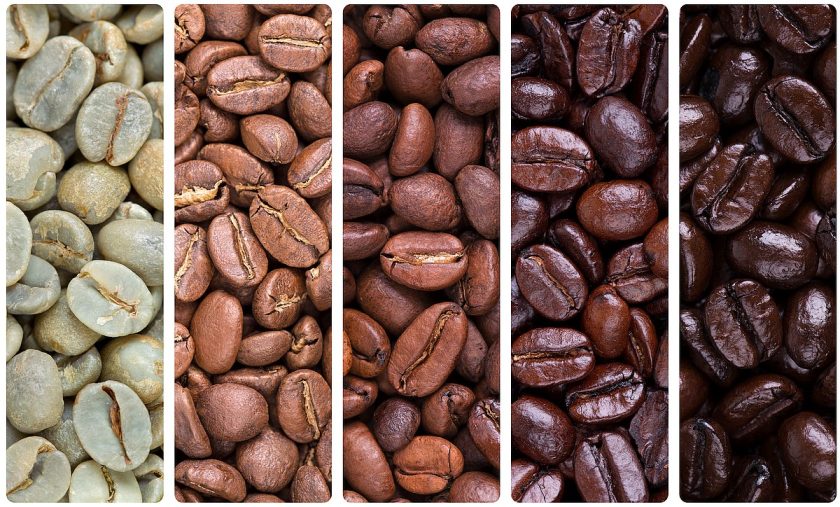
Dark Roasts note: The darker the roast, the faster to become oily. Oily beans are not necessarily bad, they make great coffee. However, this means coffee loses its oomph faster, because coffee oils are volatile, once they reach the bean's surface they start to dissipate. Also, all super-automatic espresso machine owners should stay away from oily beans, because they tend to clog your machine. Even many grinders have issues with oily beans.
Are Blends Better than Single Origin for Espresso?
The choice between an espresso blend and a single origin depends on your personal preference and the barista's experience and skills.
But let me start by saying: There is no such a thing as “espresso beans“. Any coffee beans can be used for espresso.
Single origins tend to be more difficult to brew than blends, and the barista needs to experiment by adjusting the brewing variables. Typically, a single origin is roasted lighter. Anything over medium roast would kill all of the origin flavors and notes. A lighter roast as we saw is more difficult technically.
Many people just adore the “comfort food” feeling they get from a classic espresso made with darker roasts. Acidity, or floral, and earthy notes are not something they are looking for in a coffee.
On the other hand, blends are conceived with barista's success in mind. They extract easier, they have flavors that appeal to a broader audience, such as caramel, and dark chocolate. But maybe most importantly, they are more forgiving, so the barista can make minor mistakes, and the end result will still be decent. The best examples of espresso blends are most coffees from illy, and Lavazza. They have dozens of blends.
How To Choose Beans for Espresso?
The advice was a little general, and you may or may not have an idea on how to choose your next bag of coffee. But this section will be more specific.
The most important rule is to use the coffee beans you like. Do not think you need to use special beans for espresso. If you made a batch of drip coffee with a bag of beans from your local roaster, those beans are great for your espresso too. You will have though to reconcile that with the advice above.
- If you like a naturally sweeter coffee, a medium roast will be the best. Too dark and coffee will be bitter, or even worse, ashy.
- If you tasted pour-over coffee, and you liked the terroir notes, use those beans. These are typically a lighter roast that will emphasize the origin. Subtle wine-like acidity, or the floral notes with some African beans are great in an espresso. Kona coffee is amazing brewed in an espresso machine.
- If you are not sure what you like I strongly suggest Lavazza's “espresso blends”. Lavazza Crema e Gusto is a popular choice, and a great way to get your feet wet.
- If you are using the shot in a milky espresso drink, a dark roast is great. The more milk the drink contains, the more bite your shot needs, so a dark roast will be able to flavor properly your latte.
- For less milky drinks such as cappuccino, you want the espresso flavor to shine, however, origin notes, and delicate flavors will be hard to distinguish. In my opinion, a classic espresso, with dark chocolate and caramel notes, and even a nutty bean is perfect.
- If you are looking for a caffeinated espresso, blends with Robusta have more caffeine per extracted shot. However, Robusta in your blend needs to be a high quality one.
- For the classic espresso taste, a blend of medium roasted Brazilian beans with some Robusta, (under 40% Robusta) is the perfect choice.
Classic Espresso vs Modern Espresso Blend
We need to address the generational view on espresso coffee beans, because the new wave of coffee looks at the espresso blend differently than the Italian blending tradition.
There are a few rules to the traditional Italian blending. Coffee beans that go into a blend are tipically a blend of Arabica beans from Latin America and a quality Asian Robusta coffee.
The Latin America beans come from Brazil and Colombia. Dry-process Brazilian coffees give the espresso the nutty flavor, while the Colombian beans give the blend dark chocolate notes. Other Latin American origins can be added to balance the acidity, or to add extra sweetness. or body. These coffees give the classic Italian espresso blend its flavor balance and texture we of the classic espresso.
A classic espresso doesn't have any acidity, or it's there only as a balancing factor. But acidity is not a feature we are expecting in a classic espresso.
The traditional espresso blend produces a sweet shot, with ample crema, with chocolate and caramel notes, and a nutty flavor.
Robusta coffee has a bad reputation in North America, but this reputation is undeserved. In the past, unscrupulous businesses used the lowest quality robusta in blends in order to increase profits. This led to anecdotes about the bad taste of Robusta beans. In reality, washed-processed quality Robusta, can give an espresso shot a good amount of crema, and an extra caffeine kick.
On the other hand, the modern espresso has less blending rules. The most important rule is that the espresso shot has to taste good. You can use any coffee beans you want. You can create unique blends that appeal to a minority of espresso lovers. Yopu fill a gap, and you don't need please everyone with your blend.
Robustas are not necessary in a modern espresso, since crema is considered as a secondary feature. Most roasters will still choose Arabicas that produce more crema, and they will not include Robusta in their blend.
Roasters will still create blends that easy to extract, because they need to sell. Lighter roasts can be difficult to pull, and the barista needs to tweak a lot of variables for the perfect extraction. However, the modern espresso is not stuck into the dark roast mentality, and we see blonde espresso even from Starbucks.
General Rules and Tips on Buying Coffee Beans
Make sure you follow the general rules of buying beans, no matter what your taste is. These rules apply for any brew method, but the espresso shot is more affected than any other method by a bad batch of coffee.
- Beans' freshness should be on top of your priority list. Buying from a small roaster has its advantages, but make sure you ask them about the roast date. Most of them roast once a week, and you can arrange to buy your beans on that day or the following. Don't buy beans roasted 2 weeks ago. They are already old.
- If you buy from a large roaster, find out how they package the beans. These coffees are flushed with nitrogen or vacuum packed, so they have a really long shelf life. But Look fat the expiration date anyway, you still don't want to buy a coffee that's been on the shelf for a year.
- Buy coffee beans in small quantities. You don't want to go stale in your pantry.
- Buy whole beans coffee, if you can. Your espresso will be lifeless after a few days into your pack of ground coffee. Small ground coffee packages might work, however, there are more problems with ground coffee than just freshness.
- Buy quality coffee, don't buy good enough, or average. Good coffee is picked fully ripe, and it's manually sorted to remove bad beans.
- Learn as much as you can about your roaster. I encourage you to get a bag of beans from a new roaster, this is how you discover what works best for you. But get some references about you new roaster.
- If you are buying from a small local roaster, check how they store their roasted beans. Buying a bag from a batch of beans roasted a week ago, is perfect, if they store it properly, But if coffee is stored improperly, is almost stale by this time.
- Avoid coffee that is untraceable. If you can't find out where the coffee comes from, then it's likely of poor quality.
- Arabica is the best coffee. Brewing espresso with Arabica beans is the way to go. However, 10% to 40% Robusta beans in a blend will give your shot more crema.
More Tips for Choosing Espresso Beans
Here are some of the most asked questions regarding the espresso beans. We already talked about it earlier in the article, but just in case the format wasn't very clear, here it is again.
What Is The Difference Between Espresso Coffee Beans And Regular Coffee Beans?
No difference. They are all coffee beans. What you see marketed as espresso beans are just espresso beans are roasted longer. Beans that are marketed as espresso are roasted longer tipycally past the second crack. This longer roast gives them a darker appearance, and it makes them more soluble in water. The roast flavors, (ahy notes, toast flavors), are more intense. The longer roast will effectively destroy any terroir notes and flavors, so all beans will taste similar.
However, this way of roasting espresso is changing. Coffee lovers find lighter roast more appealing than darker. More and more roasters offer their customers blonde espresso beans.
Can You Use The Same Coffee Beans For Espresso?
The coffee used to make coffee and espresso are the same, as we said it before. You can use Kenyan, or Ethiopian beans to make an espresso, although they are marketed as the best beans for pour-over.
The truth is, espresso with African beans tastes amazing, but it requires the barista to adjust many brewing variables, in order to pull a great shot. Hence the reluctance of home baristas to try it.
You will see information on the Internet that tells you that there is a difference between “espresso beans” and “regular coffee beans”. The oly truth to that statement is that you cn't really pull nice espressos from very light roasts. You can use any shade of roast from cinnamon up. You will just have to adjust you brewing parameters for a perfect extraction.
So my advice is yes, give it a try, but only if you have the time and energy to spend on it. It might pull you down the rabbit hole.
Conclusion
The reality is that you can use any coffee for espresso, as long as you like it. You don't need a special coffee for your espresso machine.
Roasters market darker roasted coffees as espresso beans because this is the traditional roast for espresso. However, third wave of coffee brings modern roasts and varietals for your espresso experience.
My advice is test, if you like to test, if you don't like to test, stick to a classical, medium roast espresso blend.
